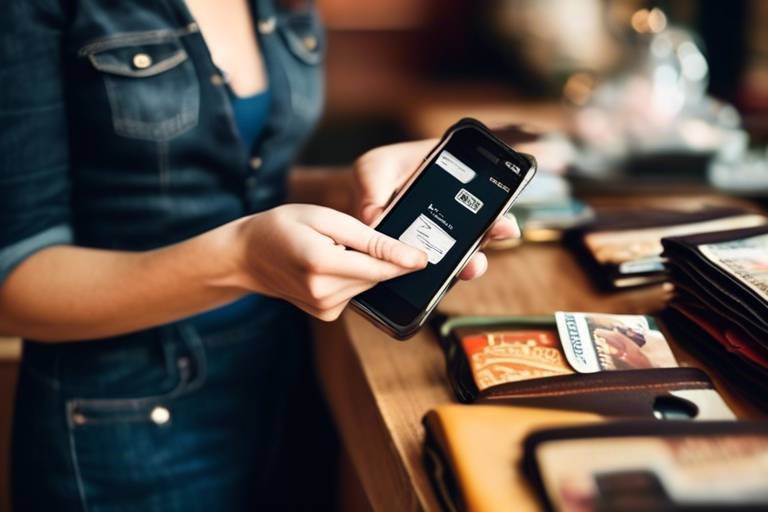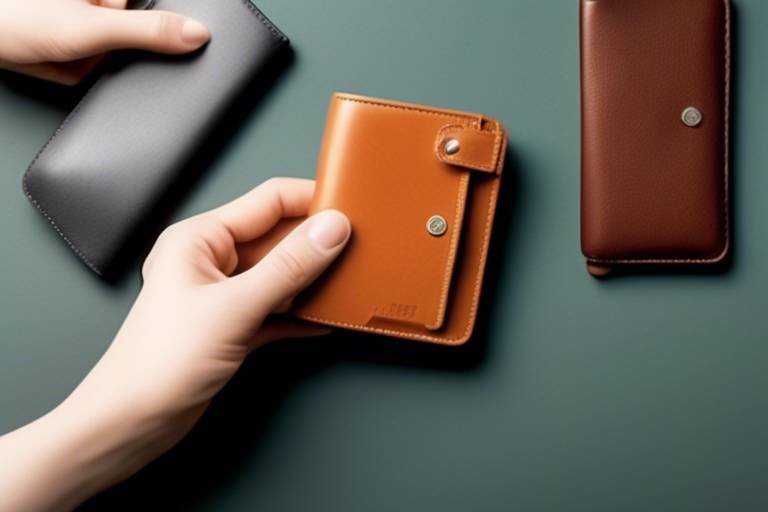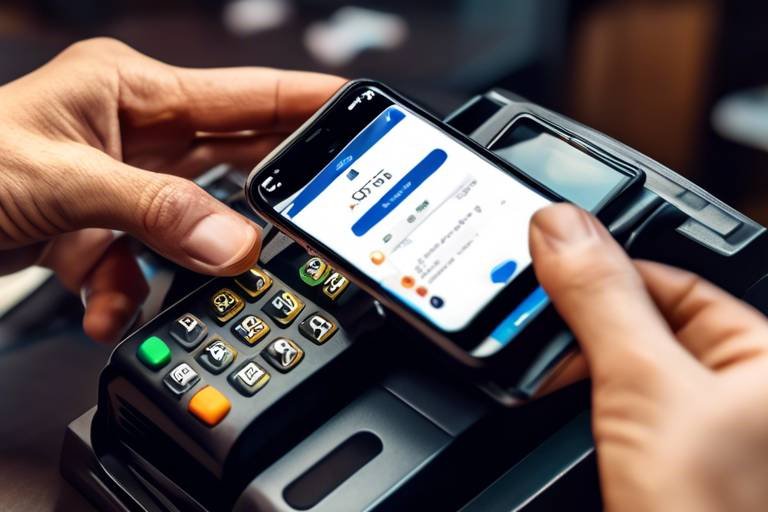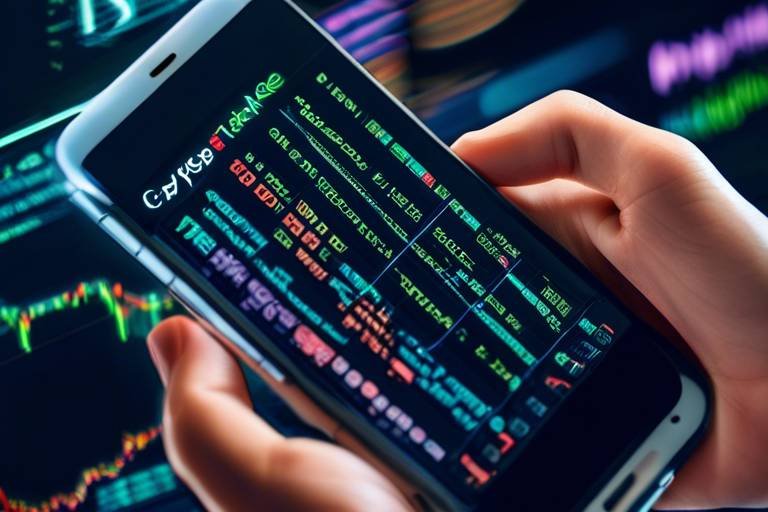How to Use Wallets for Secure Asset Transfers
In today's digital age, the way we handle our assets has transformed dramatically. With the rise of cryptocurrencies and digital assets, understanding how to use wallets for secure asset transfers is more important than ever. Imagine your wallet as a digital vault, safeguarding your treasures against theft and loss. In this article, we will delve into the essential practices for utilizing wallets effectively, covering various types of wallets, security measures, and best practices to protect your digital assets. Whether you’re a seasoned investor or just starting your journey into the world of digital currencies, this guide will equip you with the knowledge you need to navigate the complexities of secure asset transfers.
When it comes to digital wallets, not all are created equal. There are several types of wallets available, each with its own unique features and security levels. Let's break them down:
- Hardware Wallets: These are physical devices that store your private keys offline, making them highly secure against online threats. Think of them as a safe deposit box for your digital assets.
- Software Wallets: These can be desktop or mobile applications that store your assets online. While they offer convenience, they can be more vulnerable to hacking.
- Paper Wallets: A paper wallet is a physical printout of your public and private keys. While they are immune to online attacks, they can be easily lost or damaged.
Choosing the right type of wallet is crucial for ensuring the safety of your assets. Consider your needs, the level of security you require, and how often you plan to access your funds.
Setting up your wallet properly is the first step to ensuring its security. Here’s a simple step-by-step process to get you started:
- Choose Your Wallet Type: Decide whether you want a hardware, software, or paper wallet based on your security needs.
- Download or Purchase: If you're going for a software wallet, download it from the official website. For hardware wallets, purchase from a reputable source.
- Generate Your Keys: Follow the instructions to generate your public and private keys. This is a crucial step, as your private key must remain confidential.
- Backup Your Wallet: Create a backup of your wallet and store it in a secure location. This can be a USB drive or a secure cloud service.
- Configure Security Settings: Enable features like two-factor authentication and set a strong password.
By following these steps, you’ll lay a solid foundation for your wallet's security.
Selecting reliable wallet software is critical for the safety of your assets. Here are some factors to consider:
- User Interface: Look for software that is easy to navigate, especially if you’re new to digital wallets.
- Compatibility: Ensure that the wallet is compatible with the types of assets you plan to store.
- Reputation: Research the wallet provider's reputation in the community. Read reviews and check for any reported security breaches.
By taking the time to choose the right wallet software, you’re investing in the long-term safety of your digital assets.
When it comes to wallet security, features such as two-factor authentication, encryption, and recovery options are essential. Always look for:
- Two-Factor Authentication: Adds an extra layer of security by requiring a second form of verification.
- Encryption: Ensures that your data is stored securely, making it difficult for hackers to access.
- Recovery Options: Check if the wallet offers a way to recover your assets in case of loss or theft.
These features are your first line of defense against unauthorized access.
Keeping your wallet software up to date is crucial for maintaining security. Just like updating your smartphone, wallet updates often include patches for vulnerabilities that hackers could exploit. Regular updates ensure that you’re protected against the latest threats and bugs. Make it a habit to check for updates frequently, and enable automatic updates if possible.
Creating a backup is essential for wallet security. Here are effective strategies for backing up your wallet:
- Use Multiple Backup Locations: Store backups in different secure locations to avoid loss.
- Keep a Physical Copy: For paper wallets, ensure you have a physical copy stored safely.
- Test Your Recovery Process: Regularly test your backup to ensure you can recover your assets if needed.
Having a solid backup strategy can save you from potential disasters.
When transferring assets, following best practices can minimize risks. Here are key practices to consider:
- Verify Addresses: Double-check the recipient's address before sending assets. A small typo can lead to irreversible losses.
- Use Secure Networks: Avoid transferring assets over public Wi-Fi. Instead, use a VPN or a secure, private connection.
- Confirm Transactions: Always confirm transaction details before hitting send. Take a moment to review everything.
By adhering to these practices, you can significantly reduce the chances of making costly mistakes.
Double-checking transaction details before sending is critical. Always verify the recipient addresses and amounts. It’s like proofreading an important email before hitting send; a moment of caution can save you from a world of regret.
Transferring assets over secure networks is vital for safety. Using a VPN can encrypt your connection, making it much harder for hackers to intercept your transactions. Avoid public Wi-Fi whenever possible, as these networks are often breeding grounds for cybercriminals. Think of it like walking through a crowded market with your wallet wide open; it’s just not smart!
Q: What is the safest type of wallet for digital assets?
A: Generally, hardware wallets are considered the safest option due to their offline nature, which protects against online threats.
Q: Can I use multiple wallets for different assets?
A: Absolutely! Many users prefer to use different wallets for various assets to enhance security and manage their investments effectively.
Q: How often should I back up my wallet?
A: It’s a good practice to back up your wallet every time you make significant changes or after a transaction.
Q: What should I do if I lose access to my wallet?
A: If you’ve set up recovery options, you can use them to regain access. Otherwise, it may be challenging to recover your assets.
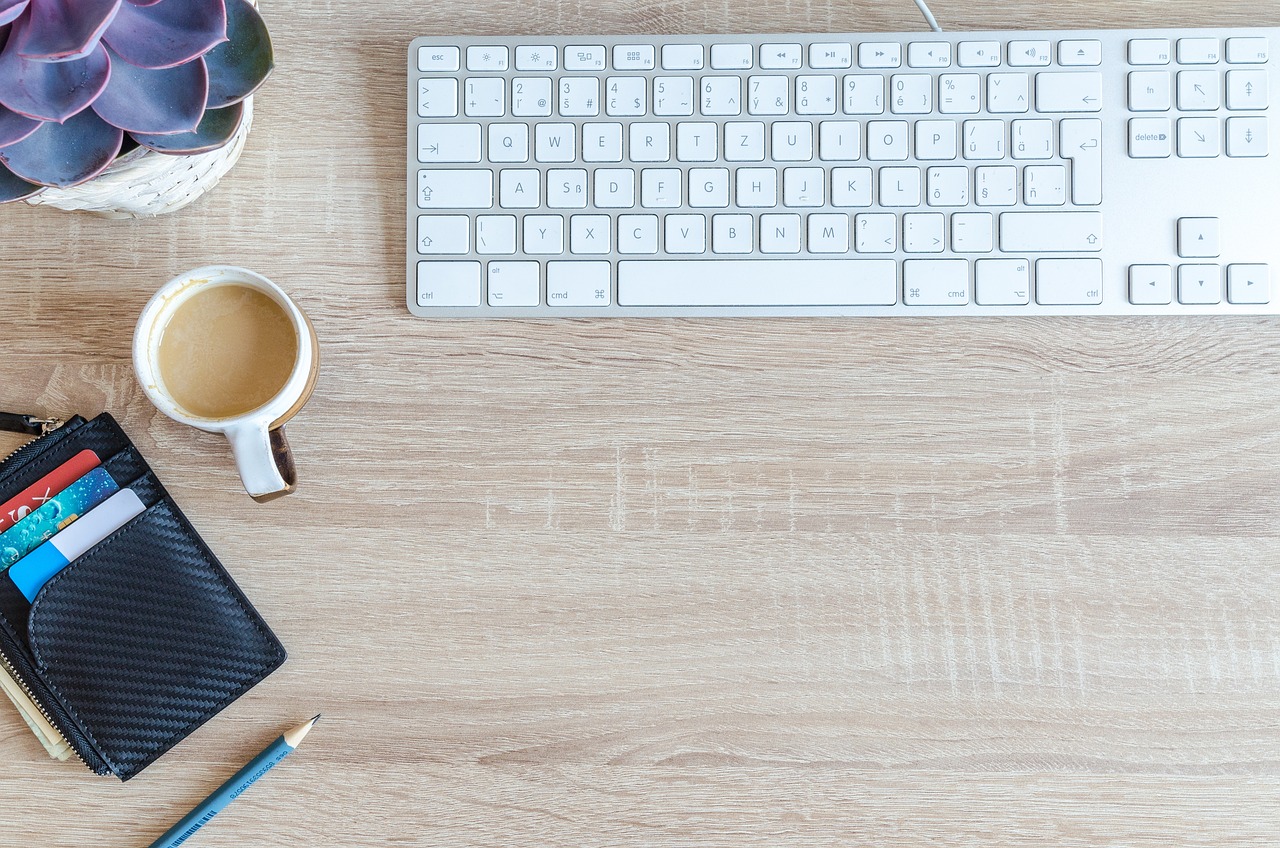
Understanding Different Wallet Types
When it comes to managing digital assets, understanding the different types of wallets is crucial. Just like choosing the right bank for your money, selecting the appropriate wallet for your digital currencies can significantly impact your security and ease of use. There are three main categories of wallets: hardware wallets, software wallets, and paper wallets. Each type serves a unique purpose and offers varying levels of security, making it essential to evaluate your needs before diving in.
Hardware wallets are physical devices that store your private keys offline. Think of them as a safe deposit box for your cryptocurrencies. They are often considered the most secure option because they are immune to online hacks. Popular hardware wallets include brands like Ledger and Trezor, which provide a user-friendly interface while keeping your assets safe. However, they do come with a price tag, so it's important to weigh the cost against the level of security you require.
On the other hand, we have software wallets, which can be further divided into desktop, mobile, and web wallets. These wallets are applications that you can install on your device or access through a browser. They offer convenience, allowing you to quickly send and receive assets. However, because they are connected to the internet, they are more susceptible to hacking attempts. It's essential to choose reputable software and ensure that your device is secure. For instance, a mobile wallet like Trust Wallet provides great accessibility on the go, while desktop wallets like Exodus offer robust features for more extensive asset management.
Finally, there's the paper wallet. This is a physical printout of your public and private keys, which means you can store it anywhere without worrying about online threats. However, the downside is that if you lose the paper or it gets damaged, your assets could be irretrievable. Paper wallets are best suited for long-term storage rather than active trading, making them a solid choice for those who want to "set it and forget it."
To summarize, the choice of wallet depends on your specific needs:
- Hardware Wallets: Best for long-term storage and maximum security.
- Software Wallets: Ideal for frequent transactions and ease of access.
- Paper Wallets: Great for offline storage but risky if not handled carefully.
Understanding these wallet types is the first step towards safeguarding your digital assets. Always consider your risk tolerance and how actively you plan to engage with your cryptocurrencies when making your choice. Remember, the right wallet can make all the difference in ensuring the safety and security of your investments.

Setting Up a Secure Wallet
Setting up a secure wallet is more than just downloading an app or purchasing a device; it’s the foundation of your digital asset safety. Think of it as building a fortress to protect your treasures. The first step in this process involves choosing the right type of wallet that suits your needs. Are you looking for something portable and easy to use, or do you prefer a more robust solution that offers higher security? Each type of wallet—whether it’s a hardware wallet, a software wallet, or a paper wallet—has its own unique features and security levels.
Once you’ve selected the type of wallet, the next step is to create it. This usually involves generating a unique key or seed phrase. It’s crucial to keep this information private and secure, as it acts like the key to your vault. Never share your seed phrase with anyone! To ensure you don’t lose access to your wallet, consider implementing a backup strategy. This can include writing down your seed phrase and storing it in a safe place, or using encrypted digital storage solutions. Remember, losing your seed phrase is akin to losing your treasure forever.
Now, let’s talk about the essential security settings you should consider. Most wallets will offer features such as two-factor authentication (2FA) and encryption. Enabling 2FA adds an extra layer of protection, requiring not just your password but also a second form of identification, like a code sent to your phone. Encryption, on the other hand, scrambles your data, making it unreadable to unauthorized users. It's like having a secret language that only you and your wallet understand.
Moreover, regularly updating your wallet software is a non-negotiable practice. Just like you’d update your smartphone or computer to protect against the latest security threats, your wallet needs the same attention. These updates often include security patches that can help shield your assets from vulnerabilities. So, make it a habit to check for updates periodically. A well-maintained wallet is your best defense against potential attacks.
In summary, setting up a secure wallet involves:
- Choosing the right type of wallet.
- Creating a strong, unique key or seed phrase.
- Implementing a solid backup strategy.
- Enabling robust security settings like 2FA and encryption.
- Regularly updating your wallet software.
By following these steps, you can significantly enhance the security of your digital assets and enjoy peace of mind knowing your treasures are well-protected.
Q: What is the best type of wallet for beginners?
A: For beginners, a software wallet is often recommended due to its ease of use. However, if security is a top priority, consider starting with a hardware wallet.
Q: How often should I back up my wallet?
A: It's advisable to back up your wallet every time you make significant changes, such as adding new assets or after you’ve created a new wallet. Regular backups ensure you’re always prepared.
Q: What should I do if I lose my seed phrase?
A: Unfortunately, if you lose your seed phrase, you may lose access to your wallet permanently. It's crucial to store it securely and consider using a password manager for added protection.
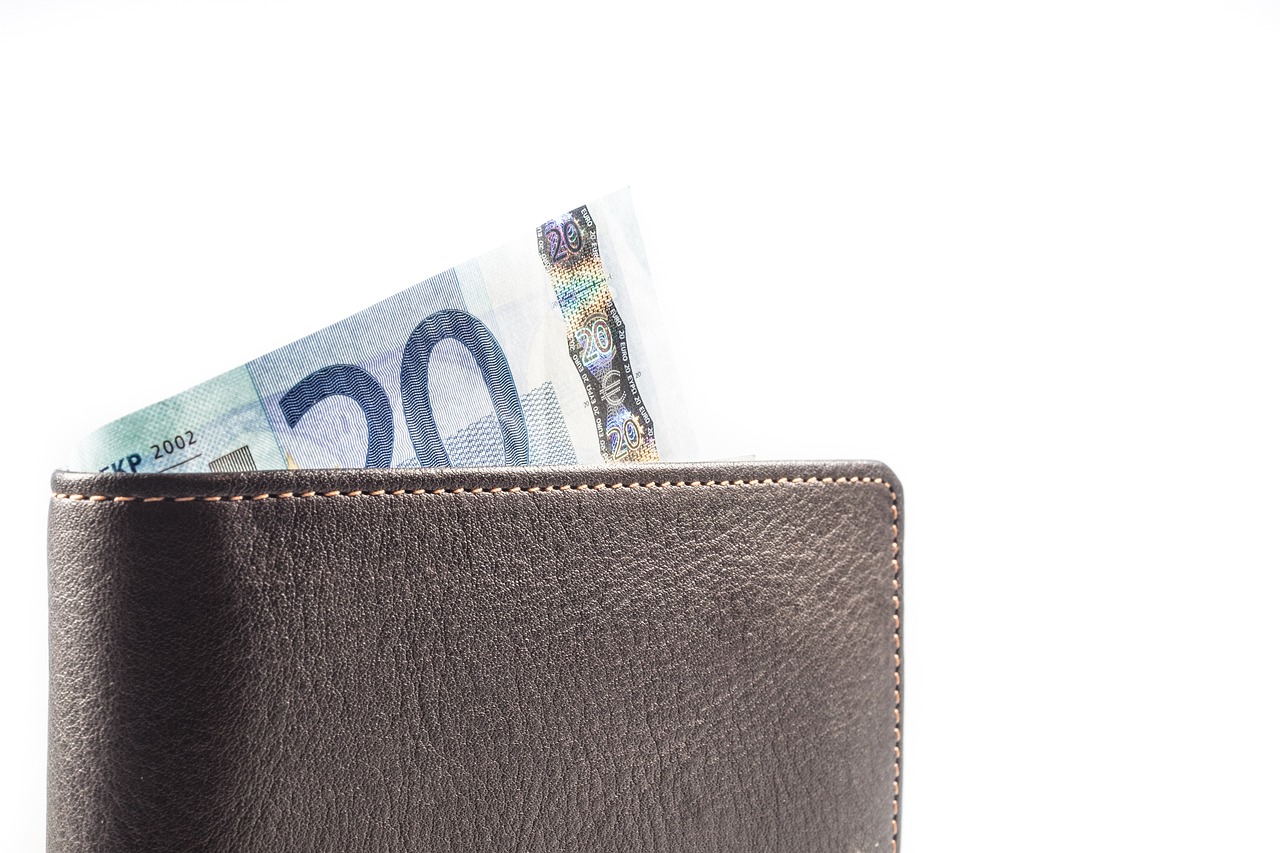
Choosing the Right Wallet Software
When it comes to managing your digital assets, the choice of wallet software is nothing short of crucial. Think of it as picking the right vault for your treasures. You wouldn't just toss your valuables into any old box, right? Similarly, you want to ensure that the wallet software you choose is not only user-friendly but also equipped with top-notch security features. So, what should you be looking for?
First off, consider the user interface. A clean and intuitive design can make your experience much smoother, especially if you're new to the world of digital currencies. You want a wallet that allows you to navigate effortlessly, like a well-organized library where you can easily find your favorite book. A cluttered interface can lead to mistakes, and trust me, you don’t want to be fumbling with your wallet when a transaction is on the line.
Next, you should think about compatibility. Not all wallets support every type of digital asset. If you’re planning to manage multiple cryptocurrencies, ensure that the wallet you choose can handle them all. Imagine trying to fit a round peg in a square hole; it just won’t work. A versatile wallet that supports various currencies will save you a lot of headaches in the long run.
Another essential factor is the reputation of the wallet provider. In a world where scams and frauds are rampant, choosing a wallet with a solid track record is paramount. Look for reviews and testimonials from other users. A wallet that has stood the test of time and has positive feedback is more likely to keep your assets safe. You can think of this as asking your friends for recommendations before trying out a new restaurant.
Additionally, it’s wise to check for customer support. In case you run into any issues or have questions, having a responsive support team can make all the difference. It’s like having a safety net; you want to know that help is just a call or click away. Look for wallets that offer multiple support channels, such as live chat, email, or even phone support.
Finally, don’t overlook the importance of security features. The best wallet software should come equipped with robust security measures, such as:
- Two-Factor Authentication (2FA): Adds an extra layer of security.
- Encryption: Keeps your data safe from prying eyes.
- Recovery Options: Ensures you can regain access to your wallet if you lose your credentials.
In summary, choosing the right wallet software is like selecting the perfect home for your digital assets. It should be user-friendly, compatible with various currencies, reputable, and equipped with excellent customer support and security features. Take your time to research and weigh your options, because the safety of your assets depends on it!
Q: What is the most secure type of wallet?
A: Hardware wallets are generally considered the most secure as they store your assets offline, away from potential online threats.
Q: How often should I update my wallet software?
A: Regular updates are crucial; aim to check for updates at least once a month to ensure you have the latest security features.
Q: Can I use multiple wallets for different assets?
A: Absolutely! Many users prefer to use multiple wallets to diversify their security and manage different types of assets efficiently.
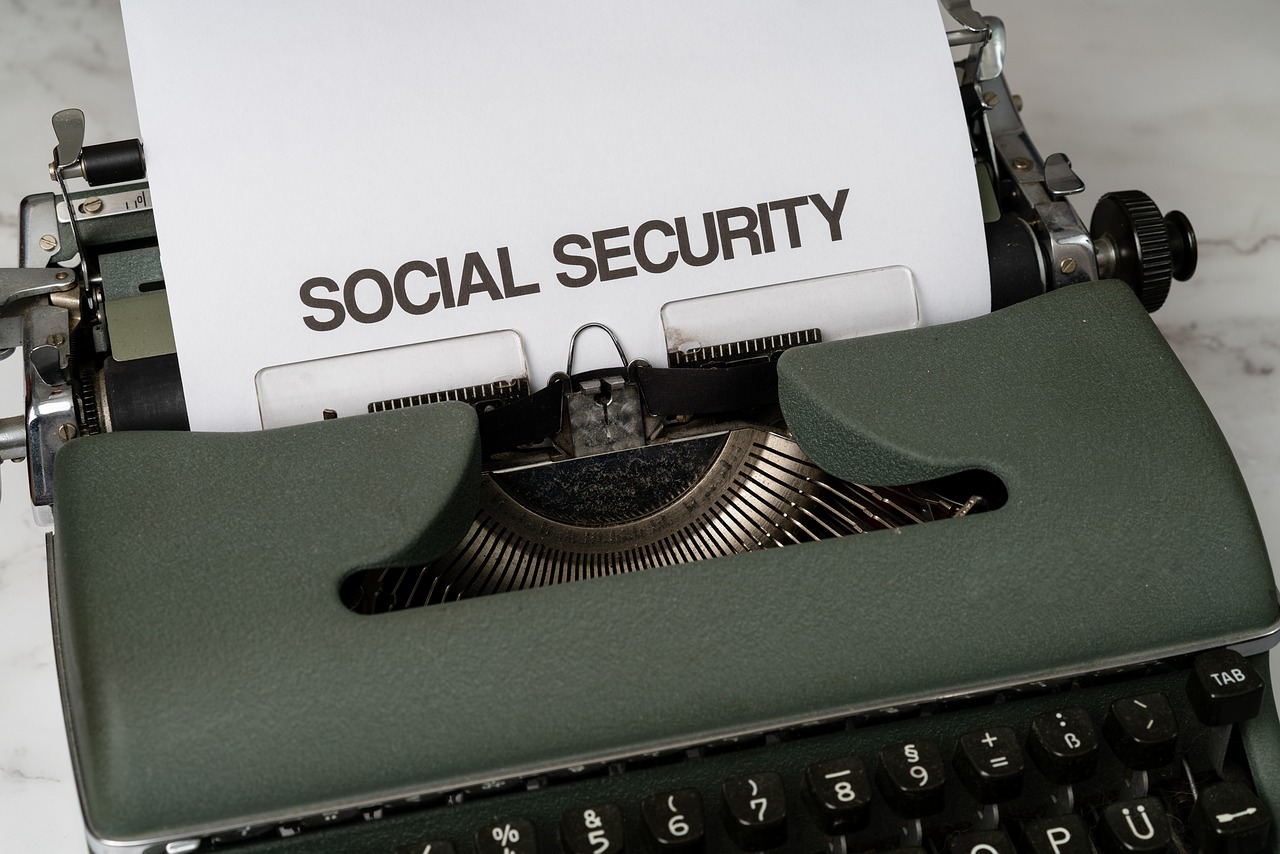
Evaluating Wallet Security Features
When it comes to securing your digital assets, is not just a good idea; it's essential. The digital world is fraught with risks and vulnerabilities, making it imperative to choose a wallet that prioritizes security. So, what should you look for? First and foremost, consider two-factor authentication (2FA). This adds an extra layer of protection by requiring not just your password but also a second form of verification, like a text message or a mobile app notification. Imagine trying to break into a house that not only has a front door but also a security system that alerts the owner if someone tries to enter. That's the kind of security 2FA provides.
Next, encryption is another critical feature. It ensures that your private keys and transaction data are scrambled and unreadable to anyone who might intercept them. Think of encryption as a secret code that only you and your wallet can understand. If your wallet uses strong encryption protocols, it significantly reduces the chances of unauthorized access.
Another feature worth considering is recovery options. Life is unpredictable, and losing access to your wallet can be a nightmare. A good wallet should offer a straightforward recovery process, often through a seed phrase or backup key. This way, even if you lose your device or forget your password, you can still regain access to your assets. It's like having a spare key hidden somewhere safe; you know you can always get back in.
Furthermore, check for transaction alerts. Many wallets offer notifications for every transaction, allowing you to monitor your account in real-time. This feature can help you catch any unauthorized transactions immediately. Just like you would receive an alert on your phone for any unusual activity on your bank account, having these alerts can give you peace of mind.
Finally, make sure to read reviews and research the reputation of wallet providers. A wallet may have all the bells and whistles, but if it’s from a company with a questionable history, you might want to think twice. Look for wallets that have a strong track record and positive user feedback. After all, you wouldn't buy a car from a company known for making lemons, right?
In summary, evaluating wallet security features involves looking for two-factor authentication, strong encryption, reliable recovery options, transaction alerts, and the reputation of the provider. By taking the time to assess these features, you can significantly enhance the security of your digital assets.
- What is two-factor authentication? Two-factor authentication (2FA) is a security process that requires two different forms of identification to access your wallet.
- Why is encryption important? Encryption protects your data by making it unreadable to unauthorized users, ensuring that only you can access your information.
- How do I recover my wallet if I lose access? Most wallets provide a seed phrase or backup key that can be used to recover your assets if you lose access.
- What should I do if I receive a transaction alert I didn't initiate? Immediately change your wallet password and enable additional security measures. Contact your wallet provider for further assistance.
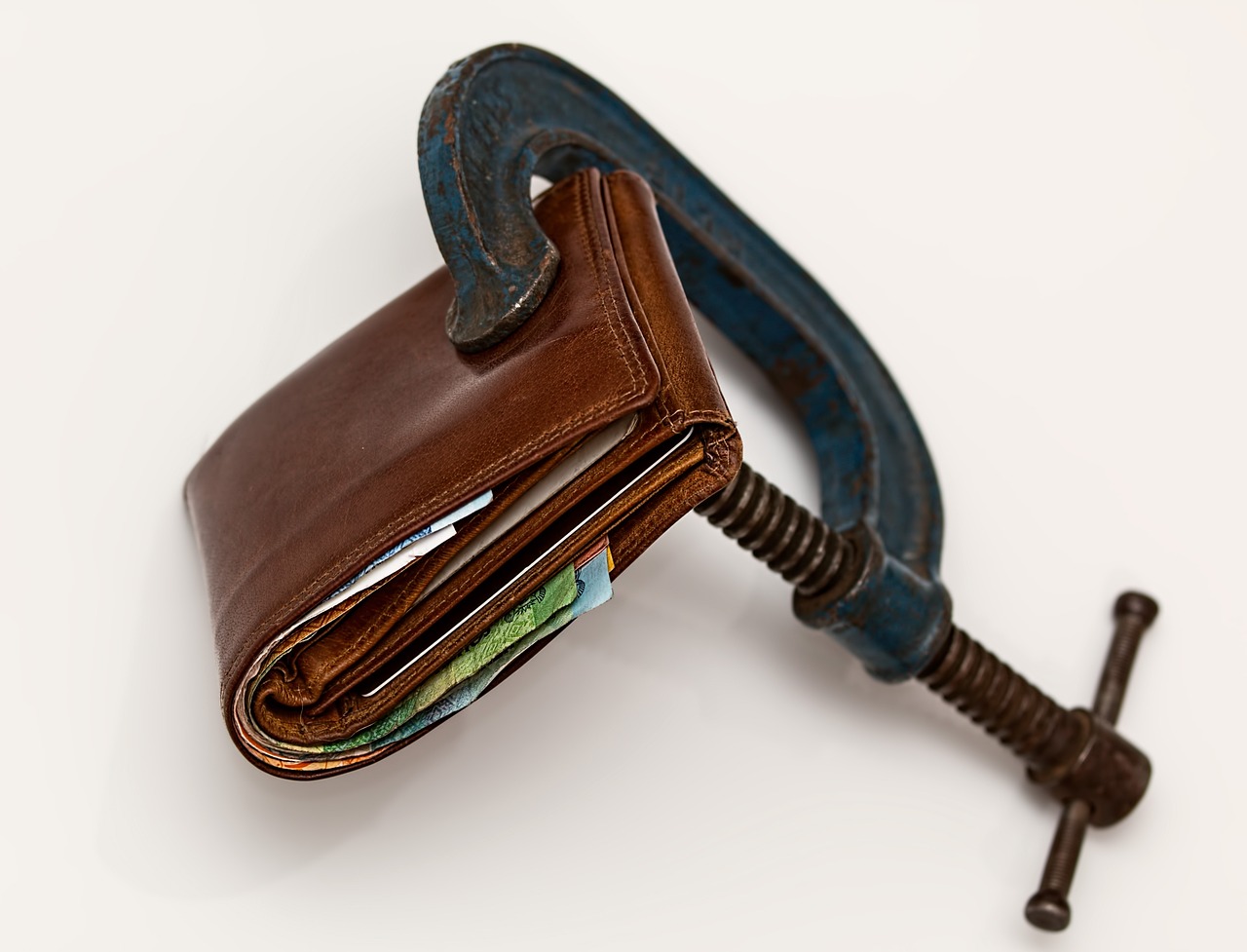
Importance of Regular Updates
When it comes to the security of your digital assets, regular updates are not just a good idea; they are absolutely essential. Think of your wallet software as a fortress. Over time, new vulnerabilities can emerge, and without proper maintenance, that fortress may become susceptible to attacks. By keeping your wallet software updated, you ensure that you have the latest security patches and features that can protect your assets from evolving threats.
One of the primary reasons updates are crucial is that they often include security enhancements that address known vulnerabilities. Just like how a castle needs to reinforce its walls against new siege technologies, your digital wallet needs to adapt to the latest cyber threats. For instance, a software update might fix a loophole that hackers have been exploiting, making it much harder for them to gain unauthorized access to your funds.
Moreover, regular updates can also introduce new features that improve user experience and functionality. Imagine having a toolbox that keeps getting better with each upgrade—new tools, better organization, and enhanced usability. This not only makes managing your assets easier but also provides additional layers of security that you might not have had before. For example, some updates might add advanced encryption methods or improved two-factor authentication options, making your wallet even more secure.
To keep your wallet secure, consider the following best practices regarding updates:
- Enable Automatic Updates: If your wallet software offers this feature, enable it. This way, you won't have to worry about manually checking for updates regularly.
- Stay Informed: Follow the wallet provider's announcements and updates. Being aware of the latest changes can help you understand the importance of each update.
- Backup Before Updating: Always create a backup of your wallet before performing any updates, just in case something goes wrong during the process.
In conclusion, neglecting regular updates can lead to dire consequences, including loss of assets or exposure to security threats. By treating your wallet software with the same care you would a physical safe, you can significantly enhance the security of your digital assets. Remember, in the world of cybersecurity, staying ahead of the curve is the best defense!
Q: Why are regular updates important for my wallet software?
A: Regular updates are crucial for fixing security vulnerabilities, enhancing features, and ensuring that your wallet remains protected against new threats.
Q: How can I ensure my wallet software is up to date?
A: Enable automatic updates if available, and regularly check the wallet provider's website for announcements regarding new updates.
Q: What should I do before updating my wallet software?
A: Always create a backup of your wallet to prevent any loss of assets in case the update process encounters issues.

Backup and Recovery Strategies
When it comes to securing your digital assets, creating a reliable backup and recovery plan is not just a recommendation; it's a necessity. Imagine losing your wallet—your hard-earned assets, personal information, and everything you’ve worked for could vanish in an instant. To prevent this nightmare, you need a solid strategy that ensures you can recover your assets even in the worst-case scenario.
First off, backing up your wallet means having multiple copies of your wallet's data stored in different locations. This could be a combination of physical and digital backups. For instance, you might consider using a USB drive to store your wallet’s private keys and seed phrases, while also keeping a written copy in a safe place. This dual approach not only secures your data but also provides redundancy. After all, what good is a backup if it’s stored in the same place as the original?
Here are some key strategies to consider when developing your backup and recovery plan:
- Use Strong Encryption: Ensure that any digital backups are encrypted. This adds an extra layer of security, making it difficult for unauthorized users to access your sensitive information.
- Regular Updates: Make it a habit to update your backup whenever you make significant changes to your wallet, such as transferring assets or changing security settings. This way, you always have the most current information at your fingertips.
- Test Your Recovery Process: Regularly test your recovery process to ensure that you can successfully restore your wallet from your backup. This practice can save you from panic during an actual emergency.
Additionally, consider using cloud storage solutions that offer encryption and two-factor authentication (2FA). However, be cautious—storing sensitive information in the cloud can pose risks if not managed properly. It’s essential to choose reputable providers that prioritize security.
Now, let’s talk about recovery. In the unfortunate event that you lose access to your wallet, having a detailed recovery plan can be your saving grace. Most wallets will provide you with a seed phrase—a series of words that can be used to recover your wallet. Treat this phrase like a golden ticket; keep it safe and never share it with anyone. If you lose this phrase, recovering your assets could be impossible, akin to losing the keys to your house.
In summary, a well-thought-out backup and recovery strategy is an essential part of managing your digital assets securely. By implementing these practices, you can rest easy knowing that your investments are protected against loss or theft. Remember, the best time to prepare for a disaster is before it happens!
Q1: How often should I back up my wallet?
A1: It’s advisable to back up your wallet every time you make a significant change, such as transferring assets or updating security settings. Regular backups ensure that you always have the latest information.
Q2: What should I do if I lose my seed phrase?
A2: Unfortunately, if you lose your seed phrase, you may not be able to recover your wallet. This is why it’s crucial to store this information securely and consider multiple backup methods.
Q3: Can I use cloud storage for my wallet backup?
A3: Yes, but exercise caution. Ensure that any cloud storage solution you use offers strong encryption and two-factor authentication to protect your sensitive information.
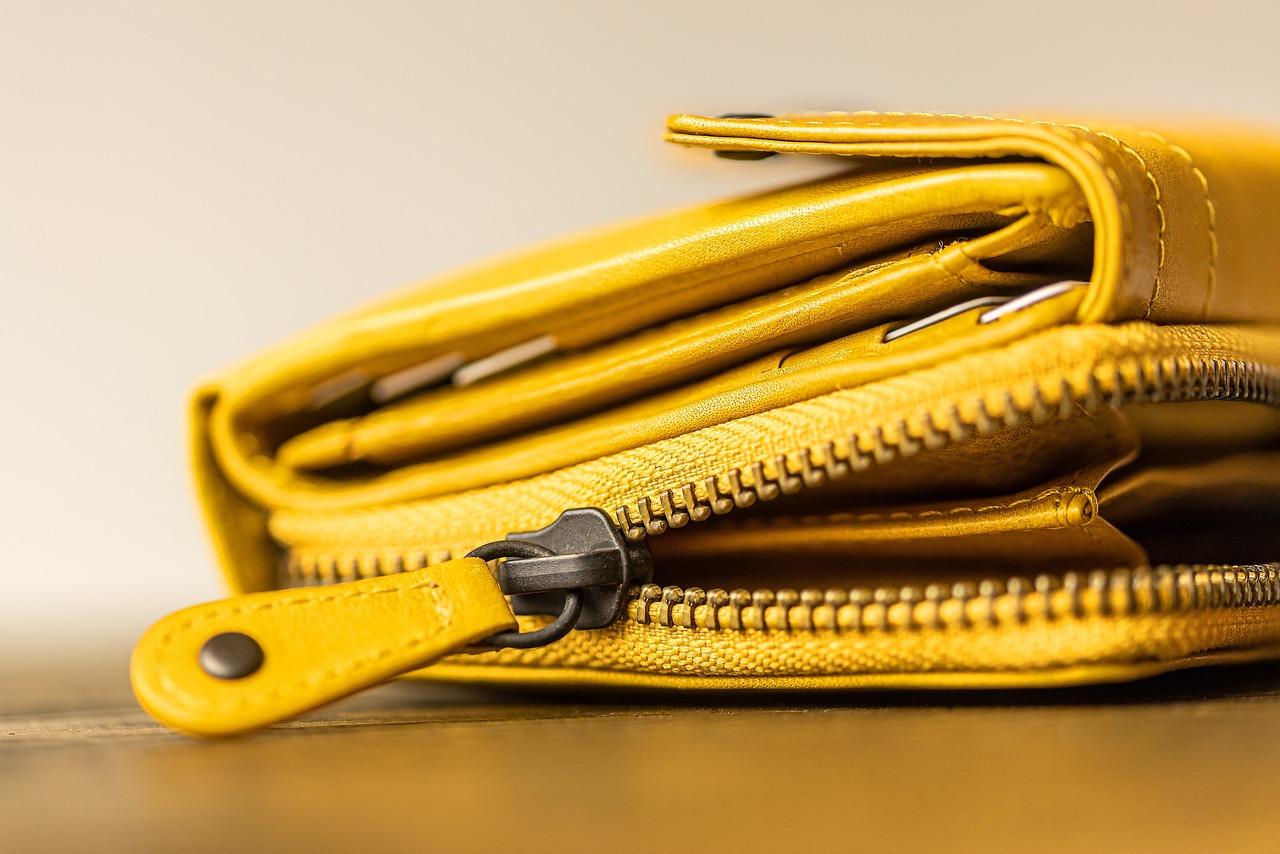
Best Practices for Asset Transfers
When it comes to transferring assets, whether they are cryptocurrencies or digital tokens, following best practices can significantly minimize risks and enhance security. Think of asset transfers like sending a letter; you wouldn't just toss it in the mailbox without ensuring it has the correct address and is securely sealed, right? Similarly, taking the time to verify details and use secure methods is crucial in the digital world.
First and foremost, always verify transaction details before hitting that send button. This means double-checking not only the recipient's address but also the amount you are sending. It's easy to make a mistake, especially if you are copying and pasting addresses. Just one wrong character can lead to your assets being sent to the wrong wallet, and once that happens, it’s nearly impossible to retrieve them. Always take a moment to confirm:
- The recipient's wallet address is correct.
- The amount you intend to send is accurate.
- Any transaction fees are accounted for.
Next, consider the network you are using for the transfer. Using secure networks is non-negotiable. Avoid public Wi-Fi at all costs; while it may be convenient, it’s often a hotspot for hackers looking to intercept your data. Instead, use a Virtual Private Network (VPN) that encrypts your internet connection, providing an extra layer of security. It's like putting your digital transactions in a safe, away from prying eyes.
Another best practice is to confirm transactions after they’ve been sent. Most wallets will provide a transaction ID that you can use to track the status. This is your way of ensuring the transaction has been processed correctly. If you notice any discrepancies, act quickly; the sooner you address an issue, the better your chances of resolving it.
Moreover, always keep an eye on the market conditions when transferring assets. Prices can fluctuate wildly, and timing can be everything. If you’re transferring assets for a specific purpose, like purchasing something or trading, ensure you’re aware of the current market trends. It's akin to checking the weather before heading out; you want to be prepared for any surprises.
Lastly, consider using multi-signature wallets for larger transfers or when dealing with significant assets. Multi-signature wallets require multiple private keys to authorize a transaction, adding an extra layer of security. This is particularly useful for businesses or partnerships where multiple approvals are necessary. It’s like needing two keys to unlock a safe, ensuring that no single person can access the funds without consensus.
Q: What should I do if I accidentally send assets to the wrong address?
A: Unfortunately, if the transaction has been confirmed on the blockchain, it is nearly impossible to reverse. Always double-check addresses before sending.
Q: Can I transfer assets over public Wi-Fi safely?
A: It’s highly discouraged. If you must use public Wi-Fi, ensure you are connected to a reputable VPN to encrypt your connection.
Q: How can I ensure my wallet is secure?
A: Use strong passwords, enable two-factor authentication, and keep your wallet software updated.
Q: What are the risks of using a single-signature wallet?
A: Single-signature wallets are more vulnerable to hacking since only one key is needed to authorize transactions. Consider multi-signature options for better security.
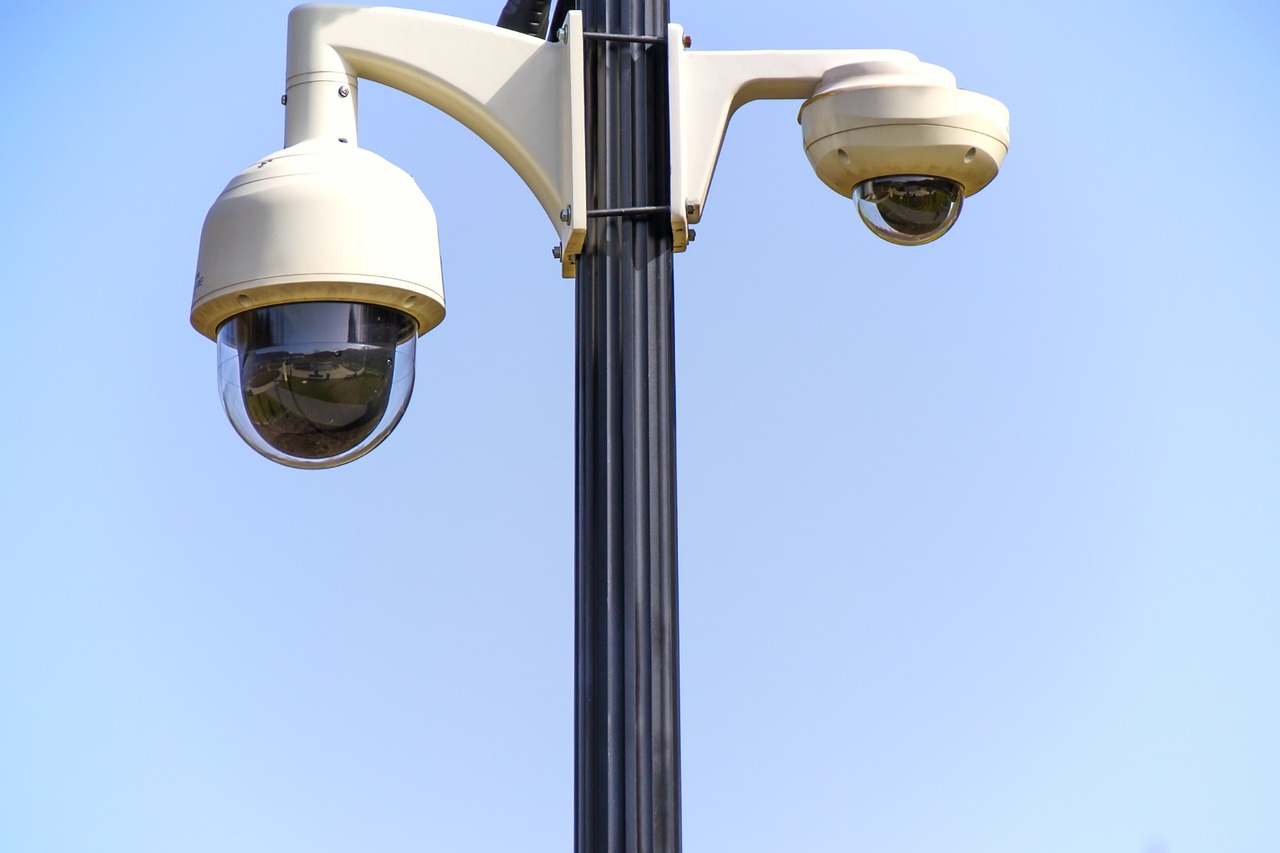
Verifying Transaction Details
When it comes to transferring assets, one of the most crucial steps you can take is to verify transaction details. Imagine you’re about to send a large sum of money to a friend, but you accidentally type in the wrong address. It's like sending a letter to the wrong house—your money could be lost forever! So, how do you ensure that you’re sending your assets to the right place? Here are some essential points to keep in mind:
First and foremost, always double-check the recipient's address. This is akin to checking the address on an envelope before mailing a letter. A simple typo can lead to disastrous consequences. Many wallets allow you to copy and paste the address, which is a great way to avoid mistakes. However, even with copying and pasting, it’s wise to visually inspect the address to ensure it matches the intended recipient’s address.
Next, pay attention to the amount you’re sending. It’s easy to get caught up in the moment and hastily enter a number. A quick glance at the transaction details can save you from making a regrettable error. If you're sending a large amount, consider sending a smaller test transaction first. This way, you can confirm that the transaction goes through correctly before committing to the full amount.
Additionally, consider the network fees associated with your transaction. These fees can vary greatly depending on the network congestion and the type of asset you are transferring. Make sure to check how much you are being charged, as this can impact the total amount that the recipient receives. You wouldn’t want to send $100 only for your friend to receive $95 because of high fees!
Lastly, always confirm the transaction after sending. Most wallets will provide a transaction ID or hash that you can use to track your transaction on the blockchain. This is your proof that the transaction was initiated. Use this ID to check the status of the transaction and ensure it was successful. If you notice any discrepancies, you can act quickly to address any issues.
In summary, verifying transaction details is not just a good practice; it’s a necessity. By taking the time to ensure that all details are correct, you can avoid costly mistakes and ensure that your assets are transferred safely and securely. Remember, a few moments spent verifying can save you from a world of regret!
- What should I do if I send assets to the wrong address? If you realize the mistake immediately, you can try to contact the recipient if you know them. Unfortunately, transactions on the blockchain are usually irreversible.
- How can I verify the recipient's address? Always copy and paste the address directly from a trusted source, and double-check it visually before confirming the transaction.
- Are network fees fixed? No, network fees can fluctuate based on network demand. Always check the fees before finalizing your transaction.
- Can I cancel a transaction once it’s sent? Once a transaction is confirmed on the blockchain, it cannot be canceled. Always verify before you send!
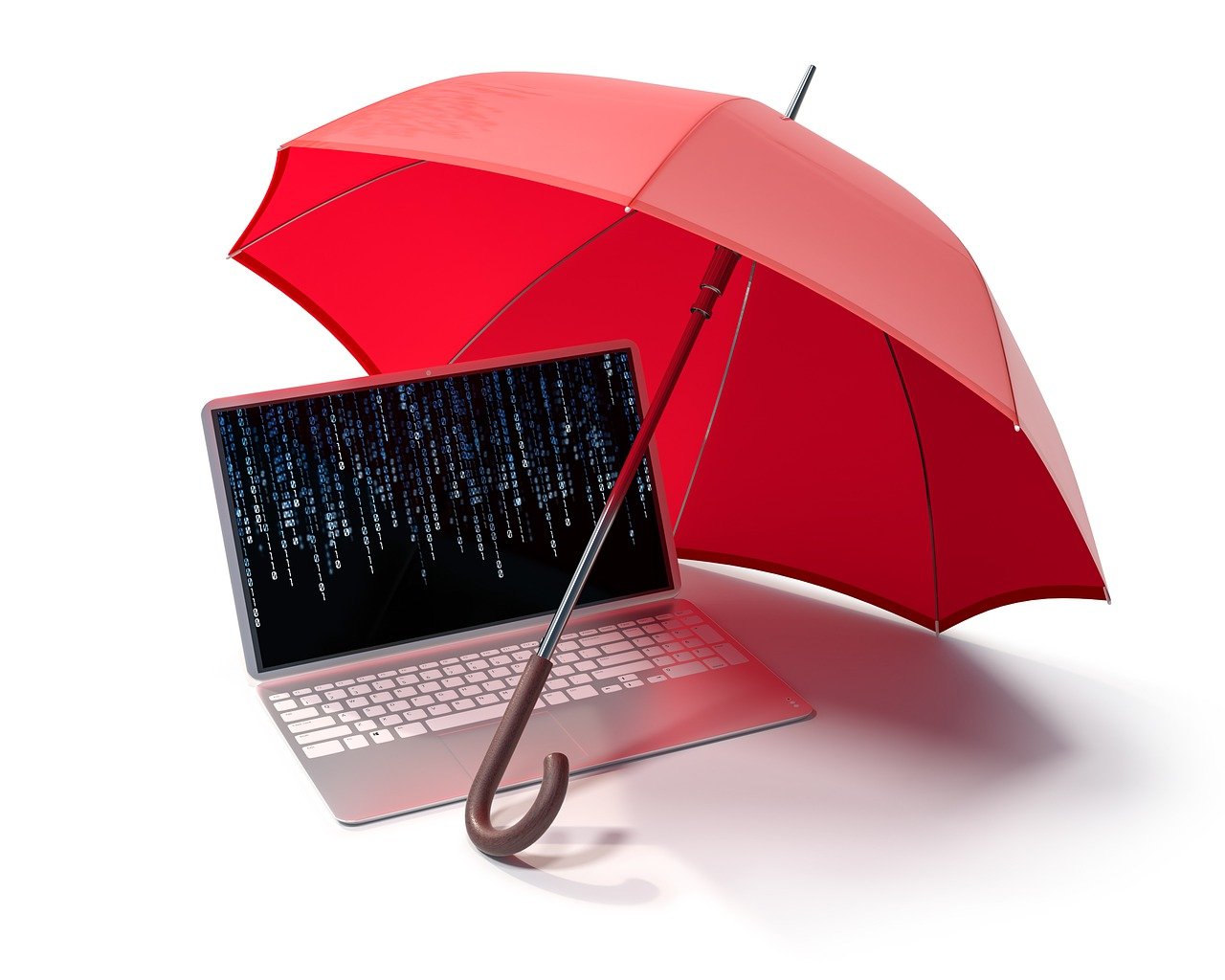
Using Secure Networks
When it comes to transferring assets, is not just a recommendation; it's a necessity. Imagine trying to send a valuable package through the mail but doing so without any tracking or secure delivery options. Sounds risky, right? The same logic applies to digital transactions. If you're not on a secure network, you might as well be shouting your financial information into a crowded room.
First things first, always avoid public Wi-Fi when handling sensitive transactions. Public networks, such as those found in coffee shops or airports, are prime hunting grounds for cybercriminals. These networks often lack basic security measures, making it easy for hackers to intercept your data. Instead, opt for your own mobile data or a trusted private network. If you absolutely must use public Wi-Fi, consider using a Virtual Private Network (VPN). A VPN encrypts your internet connection, creating a secure tunnel for your data to travel through. Think of it as a secret passageway that keeps your information safe from prying eyes.
Additionally, always ensure that the website you are using is secure. Look for URLs that begin with https:// rather than just http://. The 's' at the end stands for 'secure' and indicates that the site is using encryption to protect your data. This is especially important when entering sensitive information like passwords or financial details. You wouldn’t want to send your credit card number through a postcard, would you?
Moreover, it’s wise to keep your devices updated with the latest security patches and software updates. Cyber attackers are always on the lookout for vulnerabilities to exploit, and software developers frequently release updates to fix these weaknesses. Ignoring these updates is like leaving the front door of your house wide open. Take a few minutes to ensure that your operating system, browsers, and any applications you use for asset transfers are up to date.
In summary, using secure networks is a fundamental practice for anyone involved in digital asset transfers. By avoiding public Wi-Fi, using VPNs, ensuring website security, and keeping your software updated, you significantly reduce the chances of falling victim to cyber threats. Remember, the more secure your network, the safer your assets will be, allowing you to transfer with confidence.
- Why should I avoid public Wi-Fi for asset transfers?
Public Wi-Fi networks are often unsecured, making it easy for hackers to intercept your data. - What is a VPN and how does it help?
A VPN encrypts your internet connection, providing a secure channel for your data and protecting it from prying eyes. - How can I tell if a website is secure?
Look for URLs that start with 'https://' and a padlock icon in the address bar, which indicates that the site uses encryption. - Should I update my software regularly?
Yes, keeping your software updated is crucial as it helps protect against vulnerabilities that cybercriminals may exploit.
Frequently Asked Questions
- What are the different types of wallets available for asset transfers?
There are primarily three types of wallets: hardware wallets, software wallets, and paper wallets. Hardware wallets are physical devices that store your assets offline, making them very secure. Software wallets are applications that can be installed on your computer or mobile device, offering convenience but requiring proper security measures. Paper wallets are simply printouts of your public and private keys, which can be very secure if stored properly.
- How do I set up a secure wallet?
Setting up a secure wallet involves several steps: start by choosing the right type of wallet for your needs. Next, generate your keys securely, and make sure to back them up in multiple safe locations. Don’t forget to enable security features like two-factor authentication and encryption to bolster your protection. Always keep your software updated to guard against vulnerabilities.
- What should I look for when choosing wallet software?
When selecting wallet software, consider factors such as user interface, compatibility with your devices, and the reputation of the wallet provider. A user-friendly interface can make managing your assets easier, while compatibility ensures you can access your wallet across different devices. Always opt for reputable providers with positive reviews and a strong track record in security.
- Why is it important to regularly update my wallet software?
Regular updates are crucial because they often contain security patches that protect against newly discovered vulnerabilities. By keeping your wallet software up to date, you ensure that you are utilizing the latest security features and improvements, which significantly reduces the risk of unauthorized access to your assets.
- What are the best practices for transferring assets securely?
To ensure secure asset transfers, always verify transaction details, including the recipient's address and the amount being sent. Use secure networks, such as a VPN, and avoid public Wi-Fi, which can expose your transactions to potential threats. Additionally, confirm transactions through multiple channels to avoid costly mistakes.
- How can I verify transaction details before sending?
Before sending a transaction, double-check the recipient's address and the amount. Many wallets provide a preview of the transaction details, so take a moment to review everything carefully. Mistakes can happen in the blink of an eye, and verifying details can save you from irreversible losses.
- What should I do if I lose access to my wallet?
If you lose access to your wallet, having a backup is vital. Most wallets allow you to create a recovery phrase or seed phrase during setup. Keep this phrase safe and secure, as it can be used to recover your wallet. If you didn’t create a backup, unfortunately, it may be impossible to recover your assets.


